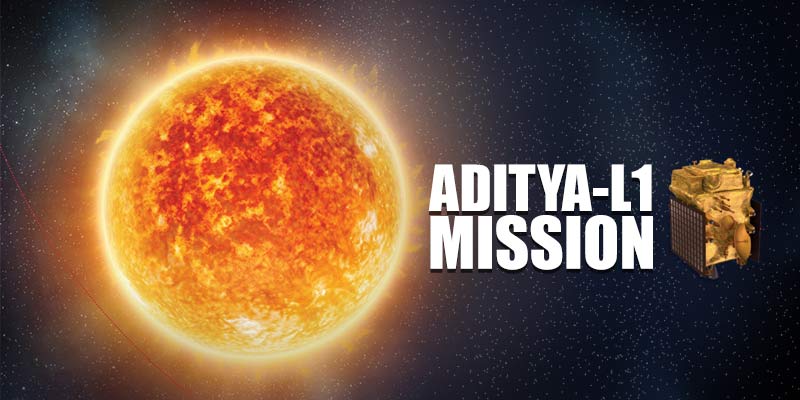- India
- Aug 28
ISRO to launch Aditya-L1 mission to study Sun on September 2
• ISRO announced that Aditya-L1 spacecraft to study the Sun will be launched using PSLV rocket on September 2 at 11.50 am from the Sriharikota spaceport.
• Initially the spacecraft will be placed in a Low Earth Orbit. Subsequently, the orbit will be made more elliptical and later the spacecraft will be launched towards the Lagrange Point L1 by using on-board propulsion.
• As the spacecraft travels towards L1, it will exit the Earth’s gravitational Sphere of Influence (SOI).
• After exit from SOI, the cruise phase will start and subsequently the spacecraft will be injected into a large halo orbit around L1.
• The total travel time from launch to L1 would take about four months for Aditya-L1.
• Aditya-L1 spacecraft is designed for providing remote observations of the solar corona and in-situ observations of the solar wind at L1, which is about 1.5 million kilometres from the Earth.
• The Aditya-L1 mission, aimed at studying the Sun from an orbit around the L1, would carry seven payloads to observe the photosphere, chromosphere and the outermost layers of the Sun, the corona, in different wavebands.
What are Lagrange Points?
• For a two body gravitational system, the Lagrange Points are the positions in space where a small object tends to stay, if put there. These points in space for a two body systems such as Sun and Earth can be used by spacecraft to remain at these positions with reduced fuel consumption.
• At Lagrange Points, the gravitational pull of two large masses precisely equals the centripetal force required for a small object to move with them. These points in space can be used by spacecraft to reduce fuel consumption needed to remain in position.
• Lagrange Points are named in honor of Italian-French mathematician Joseph-Louis Lagrange.
Objectives of the mission:
• Study of solar upper atmospheric (chromosphere and corona) dynamics.
• Study of chromospheric and coronal heating, physics of the partially ionised plasma, initiation of the coronal mass ejections, and flares.
• Observe the in-situ particle and plasma environment providing data for the study of particle dynamics from the Sun.
• Physics of solar corona and its heating mechanism.
• Diagnostics of the coronal and coronal loops plasma: Temperature, velocity and density.
• Development, dynamics and origin of coronal mass ejections.
• Identify the sequence of processes that occur at multiple layers (chromosphere, base and extended corona) which eventually leads to solar eruptive events.
• Magnetic field topology and magnetic field measurements in the solar corona.
• Drivers for space weather (origin, composition and dynamics of solar wind).
Additional read:
How ISRO will study the Sun from space?
The estimated age of the Sun is about 4.5 billion years. It is a hot glowing ball of hydrogen and helium gases. The distance to the Sun from the Earth is about 150 million kilometres, and is the source of energy for our solar system.
Manorama Yearbook app is now available on Google Play Store and iOS App Store

